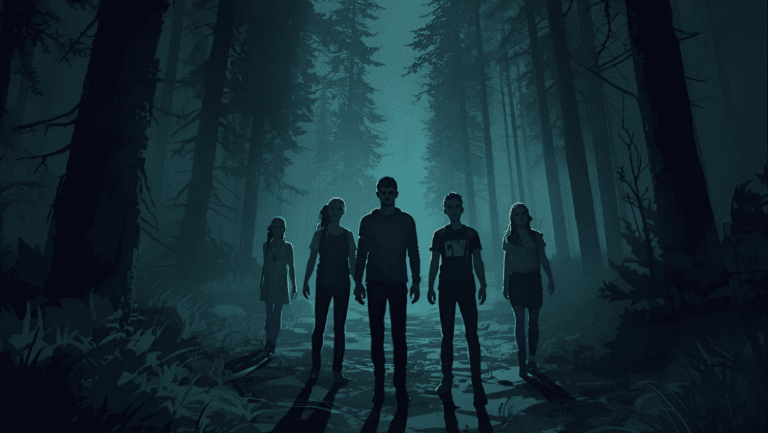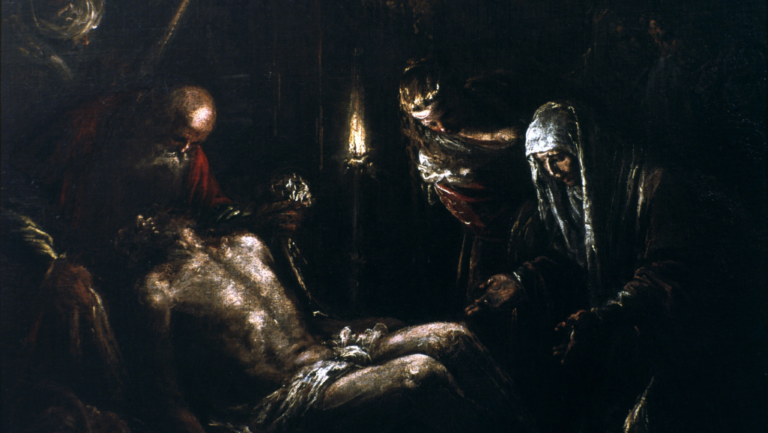Turn your controller into a compass. This guide maps the way player choice fuels tension, where small decisions echo into endings and shape who survives the night.
Supermassive Games raised the bar with cinema-style agency, while classic series like Resident Evil and Silent Hill taught us that pacing, resource management, and atmosphere matter as much as shocks.
Expect picks that span measured exploration to pulse-quickening QTEs. From The Dark Pictures Anthology’s branching entries to single horror game standouts, this introduction previews how development choices affect narrative, characters, and replay value.
Read on for curated titles, clear selection criteria, and notes on how players’ choices change relationships, survival odds, and story beats. Lean into the unknown—the scariest way forward is the one you choose.
Key Takeaways
- Player agency drives tension and outcome in choice-led titles.
- Supermassive Games popularized cinematic, agency-first design.
- Resource management like in Resident Evil adds strategic dread.
- Silent Hill shows atmosphere can shape endings more than scares.
- Multiple playthroughs reveal new story beats and character moments.
Why interactive horror games keep us up at night
Small acts in a game can ripple across hours of story and haunt you between sessions. The real dread comes from consequence: a single choice can burn bridges, doom allies, or unlock truths that change how you see the rest of the playthrough.
Player agency, branching narratives, and the fear of consequence
When every choice matters, tension grows. Branching systems reward both curious and cautious players. Quick prompts force instinctual decisions, while slow judgments can reveal clues that rewrite future events.
Timed moral dilemmas push the player into raw responses. The result is a narrative that mirrors your psychology and raises stakes for characters you care about.
Present-day trends: from cabins in the woods to futuristic nightmares
Modern horror spans cabins in the woods setups like Until Dawn to bleak, tech-driven investigations such as Observer. Over years the genre has blended cinematic pacing and responsive systems so you never quite relax.
- Fear of consequence fuels sleepless nights: small choices can cost lives.
- Branching scenes change outcomes, so replaying reveals new events.
- Atmosphere and timed prompts crank up tension and test instincts.
Agency isn’t just a feature — it’s the genre’s most chilling power. Players make decisions that leave story scars, and many return to test theories and uncover layers missed the first time.
How we chose these terror-inducing titles
Our list favors titles where a single choice can reroute the plot and reshape character fates. We looked for clear feedback systems that make consequences visible: relationship meters, butterfly logs, and clue trails.
Impact matters more than spectacle. Until Dawn’s butterfly effect proved how a tracked decision system can produce dozens of different endings across ten chapters. That mechanical clarity guides players and rewards careful play.
Impactful choices and different endings
We prioritized titles where decisions change scenes, open routes, or lock outcomes. Games that tie endings to intent, discovery, and performance rise to the top.
Survival horror fundamentals: resource and tension management
Scarcity and risk-reward earn dread. Resident Evil HD Remaster shows how limited ammo and tight inventory force real trade-offs that affect character outcomes.
- Meaningful mechanical choice over cosmetic branching.
- Replayability via optional scenes and chapter reflows.
- Balanced difficulty that tests reflex and judgment.
- Strong writing that makes consequences feel earned.
“A well-designed decision makes the final outcome feel inevitable, even when it’s earned.”
Until Dawn: the butterfly effect masterclass from Supermassive Games
A night on Blackwood Mountain turns small acts into life-or-death tests for a fractured group.
Until Dawn puts players in control of eight young adults sheltering in a cabin in the woods. The core mechanic is a butterfly effect system where every choice can ripple through ten chapters, changing relationships, routes, and who faces death.
Every choice can mean life or death for the cast
Decisions matter. Totems and clues hint at futures, but a single wrong move can lock a fate forever. The game uses strict auto-save, so slips become permanent shifts in story and character arcs.
Cinematic scares, QTEs, and that “Don’t Move” heartbeat
Third-person exploration blends with cinematic QTEs and tense “Don’t Move” sequences that turn breath and timing into survival tools. Those set-piece moments push player instinct to the front of gameplay.
Remake relevance: why it still defines the genre today
Built on the Decima engine and spotlighting a strong cast, the original PS4 release reshaped narrative design. The PS5/Windows remake (Oct 4, 2024) sharpens presentation and broadens reach, reaffirming the title as a benchmark for story-driven fear.
- Set the scene: a remote cabin, a torn group, and danger that rewards attention.
- Play smart: collect totems, preserve key tools, and balance risk to keep more characters alive.
- Play loud or play careful: perfect runs and messy human errors each deliver distinct shocks.
“A single choice can turn a scene from relief into tragedy.”
The Dark Pictures Anthology: bite-sized nightmares where every choice matters
Short, self-contained tales in this anthology turn brief scenes into lasting dread. The Dark Pictures Anthology is a series of standalone, choice-driven adventures by Supermassive Games that center on a small group whose fates hinge on split-second calls.
Man of Medan, Little Hope, House of Ashes, and beyond
Each entry twists a central premise: ghost-ship dread, witch-trial echoes, and subterranean nightmares. The Devil in Me (2022) and other entries keep the series varied while following the same branching logic.
Quick reactions, group outcomes, and anthology replayability
QTE precision and keen observation shape outcome. Missed prompts or ignored clues cascade into deadly events that change the epilogues.
- Compact stories let players test different decisions fast.
- Pass-the-pad and online co-op turn scenes into shared debates and dares.
- Cinematic camera work and branching logic sell shock and suspicion.
“The anthology is a dependable gateway into choice-led fear that rewards curiosity.”
Telltale’s The Walking Dead: consequences that linger for years
What lingers from Telltale’s The Walking Dead is less the undead and more the weight of decision. The 2012 season rewired episodic storytelling by making small acts echo across episodes and seasons.
This is a character-first game. You must make impossible calls under crushing time pressure. Scenes like the Shawn vs. Duck moment show how a fixed death can still change everything around it.
Hard decisions, harsher fallout, and character-driven endings
The series remembers your honesty, loyalty, and failures. Relationships shift, trust reshapes, and the narrative bends to earlier choices.
Some deaths are inevitable, but your choice reframes blame and trust. Quiet conversations become moral battlegrounds that haunt later scenes.
- Players face moral trade-offs that shape who survives and who remembers.
- Writing and performances humanize the fear and deepen emotional stakes.
- Endings change based on who you saved, what you said, and the burdens you carry.
“There’s no perfect route—only versions of yourself under pressure.”
Why it matters: This series taught millions that brave narrative choice can grip harder than combat. Own your path; survival here is measured by bonds and promises kept.
Resident Evil HD Remaster: survival horror decisions with deadly stakes
In Resident Evil HD Remaster, scarcity turns familiar corridors into calculated risks. The Spencer Mansion returns with sharper visuals and modern controls, but the core tension endures: limited ammo and tight inventory force choices that matter.
Route knowledge, puzzle timing, and item discipline shape each run. Learning where to conserve bullets, when to detour for a key item, and how to patch wounds changes who survives.
Ammo conservation, character fates, and multiple outcomes
Deciding whether to fight or flee is a constant test. Players who hoard resources can reach different rooms and unlock alternate endings.
- Revisit a blueprint survival horror game where planning beats panic and every bullet matters.
- Gameplay economies—herbs, ink ribbons, and key items—force thoughtful risk management.
- Endings hinge on execution and empathy: who you save and when affects character fate and final outcomes.
Modern touches polish the mood without easing the dread. The remaster rewards replay: master routes, uncover secrets, and try stricter constraints to test your survival instincts.
“The mansion tests patience, precision, and the courage to leave a corridor unexplored—until it’s safe.”
Silent Hill: dread, discovery, and endings shaped by the player
Silent Hill makes dread feel like a patient companion, watching you as you wander its fog-suffused streets. The series centers on Harry Mason’s search in a town that punishes and reflects intent. Every route and choice nudges the narrative into a darker or more ambiguous register.
Atmosphere outweighs jump scares. Sound, symbolism, and isolation build a pressure that sinks in slow. Disturbing imagery and tight sound design turn ordinary places into moral mirrors.
Exploration matters. Optional areas, cryptic clues, and environmental storytelling reward players who probe corners. Those discoveries tilt the story and unlock endings that feel earned.
Atmosphere over jump scares; choices that alter the story’s tone
The town responds to care and cruelty. How you treat other characters and which paths you take subtly change mood and final pages.
- Silent Hill is a masterclass in psychological dread where the town feels alive.
- Choices—routes and interactions—shift tone more than they flip flags.
- Multiple playthroughs reveal alternate interpretations and haunting implications.
“The scariest monster might be what the town thinks you deserve.”
Call of Cthulhu: sanity on the line, choices in the dark
Call of Cthulhu drops you into a dimly lit investigation where every clue can bend your mind.
You play Edward Pierce, a private investigator drawn to the Hawkins case. Dialog trees, stealth, and probing exploration shape the unfolding narrative.
Sanity acts as a lever. Knowledge can protect you or push you closer to a fragile break. That tension influences scene outcomes and final endings.
Dialogues, investigations, and divergent endings
Decisions in conversations change how suspects react and what areas open for search. Stealthy routes avoid direct conflict, while riskier moves reveal darker truths at the cost of stability.
- Investigative gameplay blends clue-finding with mind-bending revelations.
- Risk-taking often yields truth, but it increases the chance of tragic death or irreversible loss.
- Methodical players who search thoroughly and test dialog options unlock alternate endings.
At launch the title showed rough edges, yet its flawed brilliance now reads as a hidden gem. The Lovecraftian mood is oppressive, but your stubborn curiosity steers the story forward.
“In cosmic dread, the deadliest choice is the one that feels most curious.”
Play recommended: move slowly, note what knowledge costs, and decide when to press on or seek escape. Courage here is measured by how much darkness you dare to understand.
Choice-forward cult favorites and hidden terrors
Cult classics often hide their sharpest scares behind odd mechanics and bold choices. These titles reward curiosity and punish careless moves. Each run feels personal and raw.
Song of Horror
Permadeath and a learning AI make this a nerve-shredder. The Presence adapts, and when a character dies you continue with another. That permadeath rule forces careful play and brave improvisation.
Observer
Play Daniel Lazarski and hack minds with the Dream Eater. Investigative choices reframe identity and lead to a mind-bending final decision that changes the ending.
The Suffering
This 2004 title ties behavior to three stark outcomes: Good, Neutral, and Evil endings. How you treat other characters steers the moral arc and final pages.
SCP – Containment Breach
Randomized maps and scarce supplies turn every run into a tense puzzle. Planning, panic control, and split-second choices shape multiple escape routes.
- Varied gameplay: stealth, puzzles, dialog, and resource tension keep players on edge.
- Mindful exploration: small finds change how threats track you.
- Rough edges: bold development choices reward curiosity and resilience.
“Try these titles if you crave high agency without handholding.”
Outside the cabin: branching fear across genres
The most unsettling decisions often come in unexpected forms—moral cures, time-loop puzzles, and oppressive wilderness.
Vampyr: moral tradeoffs between healer and monster
Vampyr casts you as Dr. Jonathan Reid, a physician who must balance duty and bloodlust in a collapsing city.
Every life you sparingly save or quietly take shifts the outcome and alters who trusts you.
Zero Time Dilemma: puzzle timelines and lethal decisions
Zero Time Dilemma blends visual novel beats with deadly puzzles. Solving a room can split timelines and force choices that cost lives.
The structure rewards pattern recognition and careful timing over brute force.
Darkwood: survival choices in a living, hostile forest
Darkwood is a top-down survival title where the woods react to your actions. NPCs, encounters, and night terrors change based on what you steal, share, or sacrifice.
These three entries prove the genre thrives when a player must make hard calls that test patience and courage.
- Who you help or ignore directly shapes later scenes and final outcome.
- Test different builds and journal choices across runs to trace cause and effect.
- Patience and pattern reading reward as much as raw bravery.
“Pick a path that challenges your instincts—then accept what follows.”
From malls to clock towers: classic design, modern consequences
Classic titles prove that pacing and limits can craft unforgettable panic. These older releases show a clear way that design choices still shape player emotion today.
Dead Rising: you can’t save everyone—time and choice pressure
Dead Rising (2006) layers time-sensitive rescue decisions over survival at Willamette Parkview Mall.
The clock forces hard trade-offs. Choosing who to help becomes a morality clock: who you prioritize defines the story beats you see — and those you miss.
Time pressure is a deliberate development choice that turns hesitation into loss and urgency into triumph for daring players.
Clock Tower: point-and-click panic with reactive scenarios
Clock Tower (1995) uses a minimalist control scheme to amplify vulnerability. Its reactive events pivot on timing and simple decisions.
This title follows a very different path from Silent Hill or resident evil, yet it teaches the same lesson: limits breed creativity.
- Reframe older design as a study in agency and consequence.
- Reactive events personalize each run, making imperfect outcomes meaningful.
- Constraints—few tools, many threats, one relentless schedule—spark inventive play.
“Sometimes the most honest fear comes from choices you still regret at the end of the run.”
Interactive horror games
Players who test systems discover how tiny shifts unlock new scenes and fresh endings. These titles put agency up front: your decisions steer tone, risk, and who survives.
Core themes: choices players make, different endings, and narrative outcome
Define the genre: experiences where the choices players make shape the story’s spine. Branching routes, reactive characters, and visible consequence systems are central.
- Branching routes and different endings that reward replays.
- Consequence-aware gameplay loops tied to resource scarcity and puzzles.
- Reactive characters who remember how you act and change scenes.
Who should play: fans of survival horror, decision-driven stories, and high tension
Explorers, strategists, and storytellers thrive here. A good survival horror game tests patience, inventory sense, and moral nerve.
Try a cast-driven drama for character beats, a puzzle timeline for tight plotting, or a resource-heavy labyrinth if you prefer systems play. The genre rewards intention: bold choice yields richer story and deeper character moments.
“The bolder your choice, the richer your story.”
Conclusion
Great choice-driven titles leave you replaying decisions long after the credits roll.
From Supermassive Games’ lineage—Until Dawn to the Dark Pictures Anthology—to staples like Resident and Silent Hill, the way a title lets a group react shapes the outcome.
Agency is the promise: the scariest moments are the ones players make, moment by moment. Ensemble casts deepen tension; a single decision can tilt tone, trigger events, or rewrite an ending.
Revisit these series across years and you’ll find new routes and sharper instincts. Death, failure, and missed beats become part of a personal canon, not dead ends.
Pick a starting point that fits your style—cabin-set slasher, investigative descent, or survival gauntlet—and share your routes so the next run grows richer. For a deeper look at why fear sticks, see the psychology of fear in play: psychology of fear in play.



















